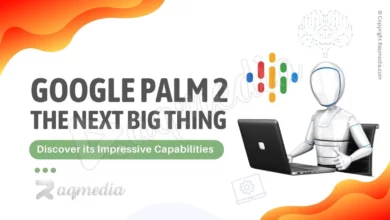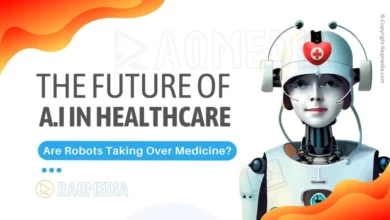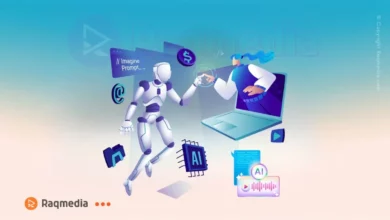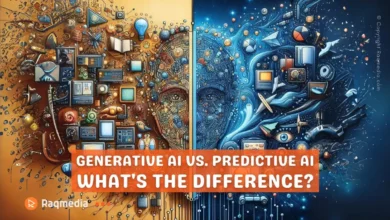In a world where the fusion of artificial intelligence and natural language processing is reshaping industries at an unprecedented pace, Large Language Models (LLMs) stand out as the vanguards of innovation. The transformative potential they carry transcends mere text generation; rather, LLMs have become the catalyst for revolutionizing how businesses operate across diverse sectors. Discover the untapped power of large language models and witness firsthand the transformative power they hold within their algorithms.
As we embark on a journey to unravel the profound impact of LLMs, we are poised to witness a paradigm shift in the way information is processed, decisions are made, and interactions unfold in realms ranging from healthcare and finance to marketing.
Table of Contents
- 1 Unveiling the Power of Large Language Models
- 2 Understanding Large Language Models
- 3 Large Language Models Applications in Healthcare
- 4 Impacts of Large Language Models on Finance Industry
- 5 Marketing Transformation with LLMs
- 6 Future Prospects and Challenges of LLMs
- 7 Harnessing the Potential of Large Language Models
- 8 Embracing a Future Defined by Large Language Models
- 9 Frequently Asked Questions:
- 9.1 1. What are some key advantages of using Large Language Models?
- 9.2 2. How do Large Language Models benefit businesses?
- 9.3 3. Are there any limitations associated with Large Language Models?
- 9.4 4. In which industries are Large Language Models making a significant impact?
- 9.5 5. What can be expected in terms of future developments in large language models?
Unveiling the Power of Large Language Models
Picture a landscape where machines not only understand human language but respond with remarkable accuracy, aiding medical professionals in diagnosing diseases swiftly, empowering financial institutions to detect fraudulent activities effectively, and enabling marketers to craft hyper-personalized campaigns that resonate deeply with consumers. This emergence of LLMs symbolizes more than just technological advancement; it signifies a monumental leap towards unparalleled efficiency, productivity, and innovation across industries worldwide.

Today marks the dawn of a new era where words wield unparalleled power—the power within Large Language Models awaits exploration, promising insights that will redefine the boundaries of what's possible. Join us as we dive deep into this realm where innovation meets intelligence, redefining the very fabric of our digital future.
Understanding Large Language Models
Large Language Models (LLMs) like GPT-3, BERT, and Transformer have revolutionized the field of natural language processing with their advanced capabilities. These models, powered by deep learning techniques, are designed to understand and generate human-like text by processing vast amounts of linguistic data. For instance, GPT-3, developed by OpenAI, is known for its impressive ability to produce coherent and contextually relevant text in a wide range of applications, from writing poetry to generating code snippets. Similarly, BERT (Bidirectional Encoder Representations from Transformers) has significantly improved natural language understanding by considering the full context of a word within a sentence.
To maximize the benefits of Large Language Models (LLMs), it is crucial to stay updated on the latest advancements in the field. Follow industry publications, attend conferences, and engage with online communities to remain informed about new models, techniques, and applications. For example, keeping track of OpenAI's releases like GPT-4 or TransformerXL can provide valuable insights into upcoming trends and opportunities for implementing cutting-edge LLM technology in your projects.
The workings of LLMs involve pre-training on large datasets followed by fine-tuning for specific tasks, allowing them to adapt to various applications effectively. By processing information at scale, these models can infer patterns in language structure and generate responses that mimic human communication patterns. For example, Transformer architecture, which underpins many modern LLMs, utilizes self-attention mechanisms to analyze dependencies between words in a sentence comprehensively.
This attention mechanism enables the model to focus on relevant parts of the input sequence when generating output, leading to more contextually accurate responses. Overall, the intricate design and training methods of LLMs contribute to their remarkable performance across diverse linguistic tasks.
Moreover, the ability of LLMs to process information goes beyond simple keyword matching or rule-based systems commonly used in traditional natural language processing approaches. Through deep neural networks and sophisticated algorithms, these models can extract semantic meanings from text inputs and produce outputs that exhibit a high degree of fluency and coherence. This transformational capability has paved the way for advancements in chatbots, language translation services, content generation tools, and more.
By harnessing the power of LLMs like GPT-3 and BERT, researchers and developers are unlocking new possibilities for human-computer interaction and expanding the horizons of artificial intelligence in linguistic domains.
Large Language Models Applications in Healthcare
Large Language Models (LLMs) have emerged as game-changers in the healthcare sector, bringing a wave of innovation and efficiency. By leveraging LLMs for tasks like medical record analysis, diagnostics assistance, and personalized treatment recommendations, healthcare providers can harness the power of data in ways that were previously unimaginable. For instance, imagine a scenario where an LLM sifts through massive amounts of patient data to identify patterns or anomalies that could aid in diagnosing rare diseases or predicting potential health risks. This level of data processing and analysis is revolutionizing how healthcare professionals approach patient care.
Real-world case studies serve as compelling evidence of how LLMs are transforming healthcare outcomes. In one notable example, a hospital implemented an LLM-based system to analyze medical records and predict patient readmission rates. By identifying factors contributing to readmissions early on, healthcare providers were able to intervene proactively, leading to a significant reduction in readmission rates and improved patient care quality. Such applications not only improve patient outcomes but also streamline healthcare processes by automating tasks that would otherwise be time-consuming for human staff.
The transformative impact of LLMs in healthcare extends beyond enhanced analytics and diagnosis assistance. Through personalized treatment recommendations based on vast datasets and deep learning capabilities, practitioners can tailor interventions to individual patients with unprecedented precision. This targeted approach not only improves treatment efficacy but also enhances patient experiences by delivering more personalized care plans. As the synergy between technology and healthcare continues to evolve, the integration of LLMs is poised to drive further advancements in medical research, diagnosis accuracy, and overall quality of care delivery.
Impacts of Large Language Models on Finance Industry
Large Language Models (LLMs) have emerged as game-changers in the finance industry, offering unparalleled capabilities for enhancing fraud detection, market trend analysis, and sentiment analysis. By leveraging the sheer processing power and natural language understanding of LLMs like GPT-3 and BERT, financial institutions are equipped to sift through vast amounts of data to pinpoint anomalies and suspicious activities that may indicate fraudulent behavior. These models can detect patterns, anomalies, and trends in real-time, providing crucial insights into potential risks before they escalate.
Moreover, LLMs play a pivotal role in optimizing decision-making processes within financial institutions by conducting data analysis and predictive modeling with remarkable accuracy. For instance, these models can analyze market trends, economic indicators, and customer sentiments to help organizations make informed decisions regarding investments, portfolio management, and risk assessment. By harnessing the predictive abilities of LLMs, financial professionals can gain valuable insights into future market movements and maximize their investment strategies based on precise forecasting.

Real-world examples showcase how LLMs are revolutionizing the finance sector. For instance, a leading investment firm integrated a Large Language Model into its trading platform to analyze news articles' sentiment about companies in near real-time. This unique application enabled traders to react swiftly to changing market perceptions and adjust their positions accordingly. Additionally, a major bank utilized an LLM-powered algorithm to enhance fraud detection by analyzing customer transactions against past behaviors and identifying potential fraudulent activities with high precision.
The transformative impact of Large Language Models in finance is reshaping traditional practices by augmenting human decision-making with advanced AI technologies. As financial institutions continue to explore the vast potential of LLMs in streamlining operations, mitigating risks, and maximizing returns on investments, the integration of these cutting-edge models promises to revolutionize the way organizations navigate the complexities of the global financial landscape.
Marketing Transformation with LLMs
Large Language Models (LLMs) have ushered in a new era of marketing strategies, enabling unprecedented levels of personalization and customer engagement. By harnessing the capabilities of LLMs like GPT-3 and BERT, marketers can create highly tailored content that resonates with individual preferences and behaviors. These models analyze vast amounts of data to understand customer sentiment, predict trends, and optimize advertising efforts for maximum impact.
One noteworthy application of Large Language Models in marketing is the generation of personalized content based on user interactions. For instance, companies can use LLMs to craft custom product recommendations, email campaigns, and social media posts that cater to each customer's specific needs. This level of personalization enhances customer experiences, boosts conversions, and fosters brand loyalty in a competitive digital landscape.
When incorporating Large Language Models into your workflows, don't hesitate to experiment and iterate to discover the most effective strategies for your specific use case. Try out different pre-trained models, fine-tuning approaches, and input data sources to optimize performance and tailor the model to suit your requirements. For instance, A/B testing variations of text generation tasks using GPT-3 can help fine-tune language outputs for enhanced accuracy and relevance in content creation initiatives.
Moreover, Large Language Models play a crucial role in sentiment analysis, allowing marketers to gauge public opinions and attitudes toward their brand or products accurately. By analyzing social media conversations, reviews, and comments using LLM-powered tools, businesses can adapt their messaging in real-time to align with consumer sentiments. This proactive approach not only enhances brand perception but also helps mitigate potential PR crises before they escalate.
Successful implementations of Large Language Models in marketing campaigns have demonstrated remarkable results by driving increased engagement, higher conversion rates, and elevated levels of customer satisfaction. Companies leveraging LLM technology have witnessed tangible improvements in click-through rates, lead generation effectiveness, and overall campaign performance. As marketers continue to explore the full potential of LLMs in shaping consumer-centric strategies, the future holds exciting prospects for personalized marketing experiences driven by cutting-edge language processing technologies.
Future Prospects and Challenges of LLMs
As we explore the future prospects of Large Language Models (LLMs), it becomes evident that their potential applications extend far beyond their current uses. One exciting possibility is the integration of LLMs into virtual assistants, enabling them to provide more contextually rich and personalized responses. Imagine a virtual assistant capable not only of answering questions but also engaging in natural conversations, understanding nuances, and offering tailored recommendations based on individual preferences. This advancement could revolutionize the way we interact with technology, making it more intuitive and user-friendly.

However, along with these promising opportunities come significant challenges related to ethics and privacy. One key concern is the issue of bias in LLM outputs, which can perpetuate societal inequalities if not properly addressed. For instance, biased language models might inadvertently generate discriminatory content or reinforce harmful stereotypes. To combat this, researchers and developers must prioritize diversity in training data sets, implement bias mitigation techniques, and conduct thorough audits to ensure fair and unbiased model behavior across diverse populations.
While harnessing the power of Large Language Models can yield remarkable outcomes, ethical considerations must always be at the forefront of any implementation. Ensure that your usage of LLMs adheres to privacy regulations, mitigates biases in dataset selection, and avoids creating misleading or harmful content. By prioritizing ethics in every stage of utilizing LLM technology – from data collection to deployment – you can build trust with stakeholders and safeguard against unintended consequences that may arise from unchecked algorithmic decision-making processes.
Moreover, the growing reliance on large-scale language models raises critical questions about data privacy and security. With access to vast amounts of sensitive information, LLMs have the potential to pose risks if not adequately safeguarded. Safeguarding user data from exploitation or unauthorized access requires robust encryption protocols, transparent data handling practices, and stringent compliance with data protection regulations. Balancing innovation with responsibility is crucial in navigating the evolving landscape of LLM technologies to build trust among users while driving continued advancements in artificial intelligence research and application.
Harnessing the Potential of Large Language Models
The transformative abilities of Large Language Models (LLMs) have significantly impacted diverse industries, revolutionizing the way businesses operate and interact with their customers. From healthcare to finance and marketing, LLMs have unlocked new levels of efficiency, accuracy, and innovation. By streamlining processes, enhancing decision-making capabilities, and driving personalized interactions, LLM technology has become indispensable in the digital age.
As we look to the future, the evolution of LLM technology continues to push boundaries and open up endless possibilities across sectors. For instance, advancements in natural language processing are enabling chatbots powered by LLMs to provide real-time customer support with human-like responses, improving user experiences and satisfaction levels. Additionally, in fields like e-commerce, recommendation systems fueled by LLMs are tailoring product suggestions based on individual preferences, increasing sales conversion rates and customer loyalty.
The pivotal role of Large Language Models in shaping the digital landscape for years to come is undeniable. With ongoing developments in machine learning algorithms and computational capabilities, LLMs are poised to drive even greater efficiencies and innovations across industries. It's crucial for organizations to harness the full potential of LLM technology by exploring new use cases, investing in research initiatives, and prioritizing ethical considerations to ensure responsible deployment of these powerful tools that hold the key to unlocking a future marked by intelligent automation and enhanced human-machine collaboration.
Embracing a Future Defined by Large Language Models
As we conclude this in-depth exploration of the transformative power within Large Language Models (LLMs), it is evident that these sophisticated AI systems are not merely tools but catalysts for innovation across industries. The journey from understanding the inner workings of models like GPT-3, BERT, and Transformer to witnessing their real-world applications in healthcare, finance, and marketing has showcased the immense potential of LLM technology. The ability of these models to process vast amounts of data, generate human-like text, and drive meaningful insights underscores their pivotal role in reshaping the digital landscape.
Looking ahead, the horizon for Large Language Models is filled with endless possibilities and challenges. While we anticipate further advancements that will revolutionize industries and drive efficiency, we must also address ethical considerations such as bias in model outputs and data privacy concerns. However, armed with knowledge, innovation, and a commitment to responsible use, we can harness the full potential of LLMs for the betterment of society.
Frequently Asked Questions:
1. What are some key advantages of using Large Language Models?
– Large Language Models offer unprecedented capabilities in natural language processing tasks like text generation, summarization, and sentiment analysis.
2. How do Large Language Models benefit businesses?
– By enabling personalized content creation, targeted advertising strategies, and enhanced customer interactions, LLMs empower businesses to drive growth and engagement.
3. Are there any limitations associated with Large Language Models?
– Challenges include biases inherited from training data sets, interpretation complexity due to model intricacies, and ethical concerns surrounding privacy implications.
4. In which industries are Large Language Models making a significant impact?
– From healthcare to finance to marketing, Large Language Models are revolutionizing processes by enhancing decision-making capabilities through data-driven insights.
5. What can be expected in terms of future developments in large language models?
– Future advancements may focus on refining model performance metrics like efficiency and accuracy while addressing issues related to fairness and transparency.
With each stride forward in this exciting realm of artificial intelligence, the evolution of Large Language Models signifies a promising future where innovation converges with responsibility. By leveraging the unparalleled capabilities of LLMs while prioritizing ethical considerations at every turn, we stand poised at the cusp of a new era defined by boundless possibilities shaped by cutting-edge technology.










Discover the untapped potential of large language models and witness firsthand the transformative power they hold within their algorithms.
🚀📧🔗 Read more at: https://www.raqmedia.com/power-of-large-language-models/
👍 Don’t miss out! Follow and like Raqmedia for more valuable insights!
#raqmedia